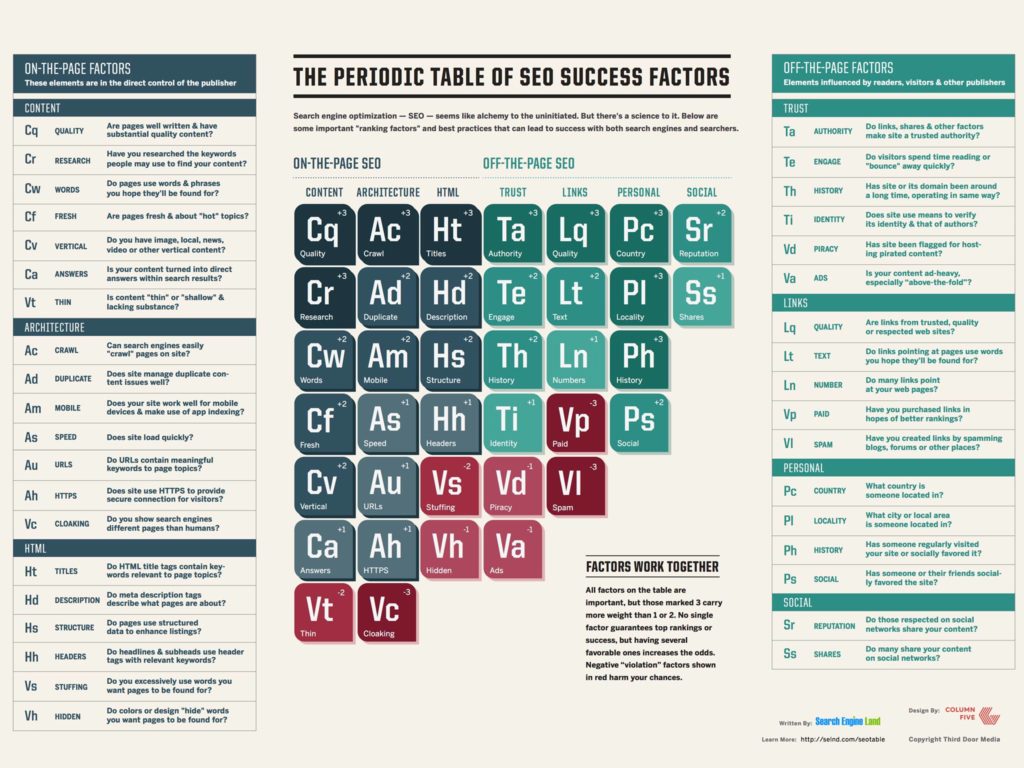Website taxonomy is one of the biggest challenges that website owners face today. It’s an integral part of search engine optimization (SEO) and other digital marketing strategies and creates a better user experience.

What is Website Taxonomy?
Website taxonomy is the process of creating tags, labels, or other content-based categories for your website posts so you can properly classify them.
Site taxonomies are generally helpful because they allow users to find specific topics within their own field of interest easily just by clicking on certain tags or keywords that appear in your blog posts. This way, you’re able to attract people who are more likely to be interested in what you have to say.
It’s important for site owners to ensure that their blog posts, articles, and any other types of content they add to their website are properly classified in such a way that it will be easier for people to find them.
This makes proper categorization an integral part of online marketing strategies because this can help you communicate better with your target market, especially if they’re finding content-related keywords in the titles and tags of your website’s various posts.
Why Should You Use Website Taxonomy?
One of the main reasons why you should use website taxonomy is to make sure that your site visitors can find what they’re looking for easily.
Another reason is that it can also help improve your site’s search engine rankings. When you add the appropriate keywords and tags to your website posts, you’re telling the search engines that those terms are important, which can help improve your site’s ranking for those particular keywords.
Website taxonomy is also helpful in organizing and managing a website’s content. By creating well-defined categories and tags for your posts, you’ll make it easier for yourself (or anyone else who might be helping you manage your website) to find and publish specific types of content on your site.
How Can You Implement Website Taxonomy?
The best way to implement website taxonomy is to start by creating a list of keywords and topics that are related to your business. You can then create categories and tags for your website posts based on these keywords.
It’s important to use a variety of keywords and terms in your site taxonomy so you can cover as many topics as possible. You can also use keyword research tools like SEMrush or Google Keyword Planner to help you narrow down your list of keywords.
Once you’ve created your list of relevant terms, start brainstorming content ideas that correspond with the topics and categories on your site taxonomy. Based on these posts, you can create a subdivision for each topic to keep their respective blog posts organized and easily accessible.
By organizing your website’s content in several ways, including website taxonomies, you’ll have an easier time attracting targeted traffic while also being able to communicate better with everyone who visits your site.
What Makes a Good Taxonomy?
When you create website taxonomies, it’s important to remember that the more specific your categories are, the better. For example, if you have a travel blog and write about various cities around the world, including New York City, Bangkok, and other targeted areas, then your categories should be very specific, too.
This is why subcategories are also helpful. You can create subcategory tags for each city or region that you write about to make sure that they’re categorized accurately under their respective main title.
Even though it might take some time to set up website taxonomies properly at first, once you’ve done so, it’ll become easier for both you and your visitors to find what they need on your site.
What Kind of Content to Include?
The best way to determine what type of content to include on your website is by looking at what your target market wants. If you’re running a business blog, then it’s important to know the types of topics and keywords that your target market is interested in.

Once you have an idea of the types of keywords and phrases that people are using to find information related to your industry or niche, you can start creating content around these topics.
This not only helps you provide valuable information to your site visitors, but it can also help improve your site’s search engine rankings since you’ll be targeting relevant keywords and terms.
The more you know about your audience and the types of content they’re looking for, the easier it’ll be to create website taxonomies that attract targeted traffic to your site.
What are the Types of Taxonomies?
There are several types of website taxonomies that you can use to group your site’s content together. You can create a hierarchical system using categories and subcategories, or you can also opt for a simplified system by grouping similar posts together with tags.
Hierarchical Taxonomy: This is the traditional way of organizing content on a website by grouping them under parent and child categories. For example, if your food blog has an international cuisine category and then further divides this into Spanish recipes and Thai recipes, then all posts that fall under each respective category will be listed underneath it on the same page. Each post will have its own URL that corresponds with its respective place in the hierarchical structure.
Tags: Sometimes, you might want to simplify your website taxonomy and use tags instead, especially if your site’s content is scattered across many different topics. This can be helpful if you’re running a freelance business and write about a variety of different things or if you have several sites that fall under the same niche.
Instead of having categories such as “Freelancing” and “Marketing,” for example, you can group your posts by topic such as “Writing Tips” and “SEO Tips.” For this type of hierarchical organization, each post will still have its own URL that corresponds with its place in the keyword taxonomy structure.
The benefit of using either system is that it makes finding related content much easier since your visitors can browse your site’s taxonomy using either a category or tag-based system.
Which is Better, Categories or Tags?
There is no one-size-fits-all answer to this question since it depends on the type of content you have on your website and how you want your visitors to interact with it.
If you have a lot of content that’s spread out over many different topics, then using tags might be a good option since it’ll make it easier for your visitors to find the information they’re looking for. However, if you have more focused content that’s grouped under specific categories, then using hierarchical categories might be a better solution.
The best option is to use a combination of both hierarchical categories and keyword-based tags, as this allows you to group related content together while still making it easy for your visitors to find posts that are relevant to their interests.
Website taxonomies should be created based on how you want others to search through your site’s content and what kind of topics they’re looking for.
What is UX Taxonomy?
User experience (UX) taxonomy is the process of organizing and categorizing content based on how it’s used, or more specifically, how it’s experienced by the user.
This type of taxonomy is often used by web designers when creating websites since it can help them determine which elements should be placed where on a page to create a more intuitive user experience.
For example, if you were designing a website for a clothing company, you might create a UX taxonomy that would include categories such as “Designer Clothing,” “Women’s Clothing,” “Men’s Clothing,” and “Children’s Clothing.” You could then subdivide each category into further subcategories, such as “Dresses,” “Jeans,” and “Shirts.”
You could also use this type of taxonomy to group content together by functionality, such as “Account Sign Up” and “Contact Us.” You can create any type of UX taxonomy using your preferred method of categorizing content. All that matters is that it should be clear to both you and your visitors what each category is about.
How Can I Improve My Site’s UX Taxonomy?
There are several things you can do to improve the organization and usability of your website’s taxonomy:
1. Make your categories and subcategories clear and easy to understand. If you’re having trouble coming up with names for each category, or you think that they may be too vague or confusing, consider using a different taxonomy system.
2. Place the most important pages under your website’s main navigation bar at the top of your homepage so visitors can access them as soon as they arrive on your site.
3. Link related content together by placing links in the text between posts whenever it makes sense to do so (i.e., “Also read…”, “Related Posts”).
4. Use images and videos to help illustrate the different types of content on your site.
5. Make it easy for visitors to search for specific content by adding a search bar to your website and using relevant keywords as tags for each post.
6. Keep your website’s taxonomy up to date as you publish new content. This will ensure that Google continues to crawl your site regularly and index your posts correctly.
7. Test different ways of organizing your website’s taxonomy to see what works best for both you and your visitors.
Why is Taxonomy Important for SEO?
Website taxonomies are important for SEO since they can help Google crawl your site’s content.
Crawling refers to the process of Google finding, downloading, and indexing new or updated content on your site. The more organized your content is, the easier it’ll be for Google to navigate through each page.
Additionally, grouping different types of content together by using either keyword-based tags or hierarchical categories can make it easier for search engines like Google to understand what type of information each post contains. This can result in a higher ranking on SERPs since it improves the likelihood that someone searching for a specific topic will find one of your posts relevant to their query.
How Do I Remember My Website Taxonomy?
There is no one-size-fits-all answer to this question, as the best way to remember your website’s taxonomy will vary depending on the type of content you have on your site.
However, there are a few tips that can help make remembering your website’s taxonomy easier:
1. Use mnemonic devices to remember your categories and subcategories.
2. Create a chart or diagram that outlines your website’s taxonomy.
3. Write down the names of your categories and subcategories and keep them in a notebook or on your computer desktop.
4. Use a mind mapping tool to create a visual representation of your website’s taxonomy.
5. Find a way to relate the names of your categories and subcategories to a topic you’re familiar with. For example, if one of your categories is “Living Room Furniture,” you might use words that start with the same letter as each category name (i.e. Lamp for Lighting, Sofa for Seating, Table for Tableware).
You may also want to create an index on your site’s homepage that lists all of your content categorized under different headings in order to provide an overview of what each page contains and allow visitors to navigate through it more easily.
Conclusion
Website taxonomies are important for both SEO and usability, as they can help improve the visibility of your content and make it easier for visitors to find what they’re looking for.
There are a variety of ways to organize your website’s taxonomy, so experiment with different methods until you find one that works best for you.
Keep your taxonomy up to date by regularly publishing new content and remember to test different ways of organizing it to see what works best.
Learn More about the BREW





